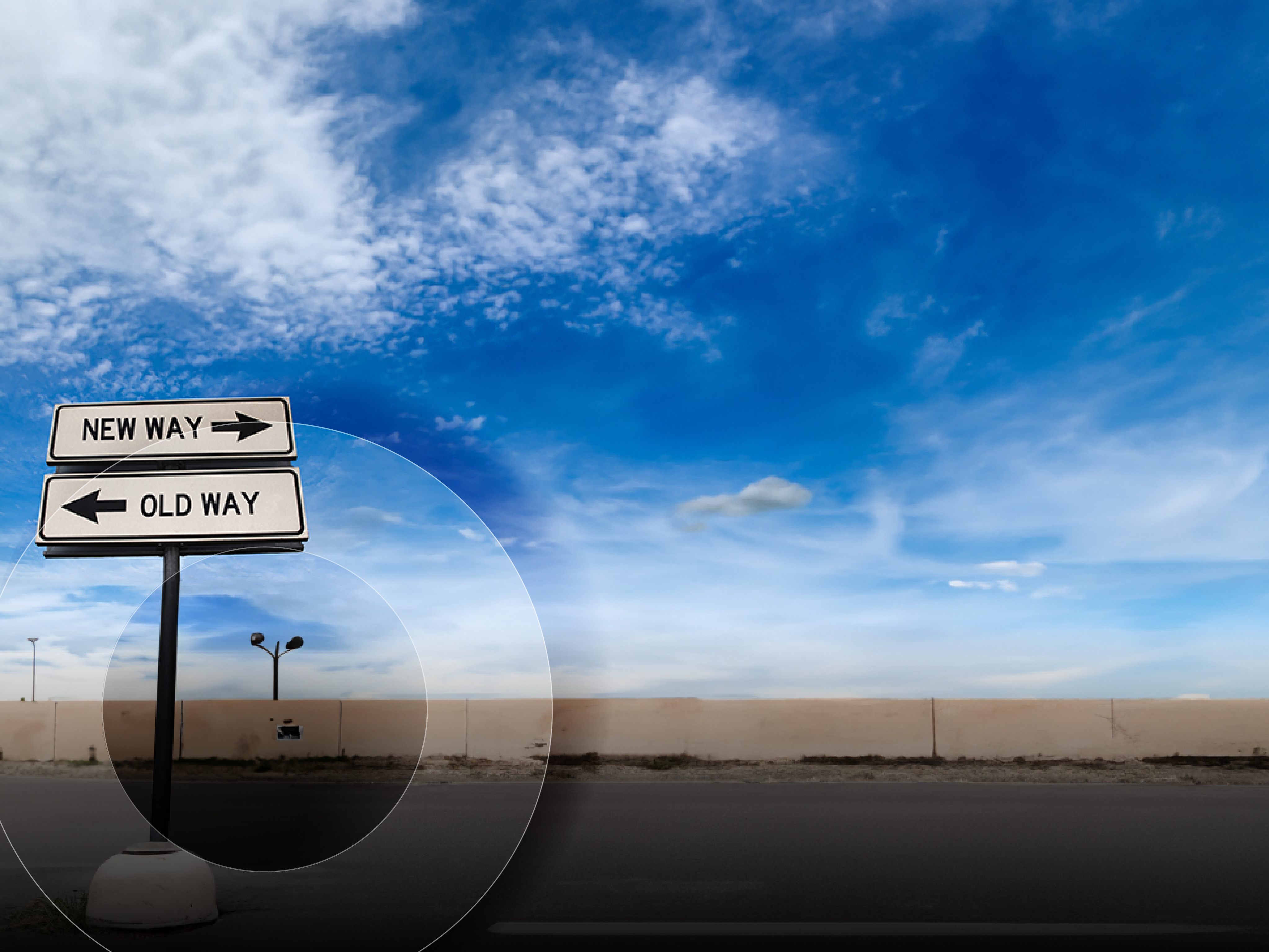Smart disaster recovery: How DRaaS can help with business resiliency:
Explore the benefits and three types of disaster recovery as a service.

Facing a devastating data loss is one of the worst-case scenarios for organizations, especially for those relying on computer systems to store vital and irreplaceable business records. Research shows that over 90% of companies that suffer a 10-day or longer disruption to their data center, or lose more than 10 days of data, never fully recover financially.
Globally, organizations are most concerned about cyber risks, business interruption, and natural catastrophes, according to the Allianz Risk Barometer 2025. By planning ahead, organizations can help limit the damage and minimize downtime, compelling many to establish a comprehensive disaster recovery (DR) plan.
In this context, we will explore disaster recovery as a service (DRaaS), which has become an essential standard for effective DR. We’ll discuss the three different types of DRaaS and help you determine whether it’s the right recovery solution for your business.
What is DRaaS?
DRaaS solutions provide an alternative to backup and recovery that can help save you time, money, and headaches. Available via a monthly subscription, this cloud computing service model can include preconfigured hardware, software, maintenance, and support to match your DR requirements.
The global DRaaS market was valued at $12.8 billion in 2024 and is projected to grow to $15.5 billion in 2025. Fortune Business Insights expects it to reach $64.4 billion by 2032.
Organizations are flocking to DRaaS because it’s more comprehensive than other disaster recovery services, like backup as a service (BaaS) and recovery as a service (RaaS). BaaS is designed to protect from events like accidental deletions and hardware failures; the service provider will perform the data recovery after the organization has reassembled the infrastructure following a failure. RaaS can restore the data and recover applications, reducing the number of days that a customer is down, but because it does not use real-time replication of data, there may be some data loss.
DRaaS can rapidly recover data in the event of a disaster, quickly restore normal operations, and address mobility and portability challenges. This minimizes the elongated time to restoration and data loss issues seen with BaaS and RaaS. DRaaS consumers may also eliminate traditional backup methods like disks and tapes, and off-site storage for mission-critical data. Many realize significant savings in hardware and software licensing fees, decrease consumption of operational resources, and improve performance, flexibility, and reliability.
Trends impacting the future of DRaaS
The DRaaS landscape is currently undergoing significant transformations to meet increasing demands from modern businesses.
Several trends and innovations are shaping the industry and helping organizations improve DR strategies, including enhanced security measures, advancements in artificial intelligence (AI) and machine learning, the rise of multi-cloud strategies, and a surge in automation and disaster recovery as code (DRaC). There is also a strong focus on regulation and compliance, a boost in customization and scalability options, improved recovery time objective (RTO) and recovery point objective (RPO), and much more.
An organization’s ability to adapt to these trends will play a big role in successfully mitigating the impact of disasters and ensuring business continuity in today’s digital age.
3 types of DRaaS: Understanding the differences
DRaaS can be categorized into the following three models based on the level of security and service your organization requires.
1. Self-service DRaaS
In the self-service DRaaS model, you are responsible for executing all facets of the recovery process. This includes developing a recovery plan, managing virtual machine (VM) replication, carrying out the recovery procedures, performing updates, and more.
While it requires the smallest investment and offers the greatest control, the trade-off is the time and resources required to manage everything. Because DRaaS vendors only provide you with tools to perform the necessary DR tasks, self-service DRaaS is most appropriate for organizations with internal DR expertise and available IT bandwidth.
Self-service DRaaS is a lot like on-premises DR solutions, except your IT team won’t need to administer the underlying infrastructure. Here, you can take advantage of the benefits of cloud computing, such as lower costs and improved scalability, agility, and availability. But its biggest strength is the amount of flexibility and customization it offers.
Additionally, self-service DRaaS is the least likely model to result in vendor lock-in, which occurs when an organization becomes heavily reliant on a specific cloud provider’s infrastructure; this dependence can make it difficult and costly to switch to a different vendor or move their infrastructure elsewhere, reducing flexibility. The self-service DRaaS model is also the most capable of supporting integrations with your existing tooling and other software.
2. Assisted DRaaS
With assisted DRaaS, you own all aspects of your DR plan, including implementation, testing, and management. This means you’ll need to develop your DR runbook, the step-by-step guide detailing the procedures for recovering and restoring affected systems and services to normal operational conditions. You will handle the recovery process for any planned exercises and actual disaster declarations.
While primarily responsible for managing the recovery infrastructure and data replication, your service provider can also serve as your trusted advisor and step in to help with failover and failback activities if your own IT team is not available.
Because the assisted DRaaS model does not offer a recovery service-level agreement (SLA), it is less expensive than managed DRaaS and is well-suited for organizations who have the necessary IT resources but want some extra guidance and support.
Assisted DRaaS provides a quick, cost-effective path to disaster recovery because it requires less time, knowledge, and skills to manage than the self-service DRaaS alternative. While it may be simpler to deploy than the self-service model, it offers less control and flexibility, and has a higher potential for vendor lock-in. It is also not as easy to use as managed DRaaS.
3. Managed DRaaS
The managed DRaaS model is best suited for enterprises with IT teams that are heavily involved in the strategic operations of the business. Because it demands a higher level of investment compared to other DRaaS options, fully managed DRaaS delivers superior support and assurance.
The vendor is solely responsible for all elements of the service offering, including the planning, testing, and management of your recovery strategy. You’ll receive a recovery SLA that meets your unique needs, and in the event of a disaster, the service provider will manage the entire recovery process.
Fully managed DRaaS is the most popular DRaaS experience because it offers low, predictable costs, is the simplest of the three models to use, and is the fastest option for implementing DR.
On the other hand, it offers the fewest customization options and may not integrate well with other software or tooling already in use. Additionally, this offering may violate company privacy policies or compliance requirements if the DRaaS provider gains access to the wrong data.
Choosing the right DRaaS offering for you
Selecting the most fitting DRaaS solution for your organization can be daunting, given the multitude of vendors, all with differing approaches and capabilities. To make an informed decision, consider the following steps:
- Evaluate provider offerings: Assess each provider’s self-service options, platform support, and regional, networking, and restoration capabilities. Review their recovery target options, compliance certifications, security services, and ownership of recovery tasks.
- Examine support and user experience: Look into change management, support models, tooling, and overall user experience.
- Analyze vendor strategies: Consider their business model, value proposition, pricing options, contract terms, and solution roadmap.
- Research market presence: Explore each vendor’s market understanding, revenue, innovation ability, customer feedback, ecosystem partnerships, growth potential, and industry analyst reviews.
With SHI, you don’t have to manage the decision alone. We can help you evaluate and streamline your disaster recovery process, identify the most suitable DRaaS solution for your needs, and ensure it aligns with your organization’s objectives. Our experts can walk you through a range of backup and recovery solutions from trusted partners; from assessing your current backup environment to designing a disaster recovery plan, our team can help you stay prepared.
Not sure where to start? Sign up for our complimentary Data Protection Fundamentals Workshop at SHI’s Customer Innovation Center, your source for expert-led workshops, events, labs, and services designed for your success. We’ll offer vendor-neutral insights and best practices to enhance your backup, recovery, and archival strategy and operations.
An effective DRaaS solution means better business resiliency. Connect with an SHI expert to solve what’s next with smart DR.




